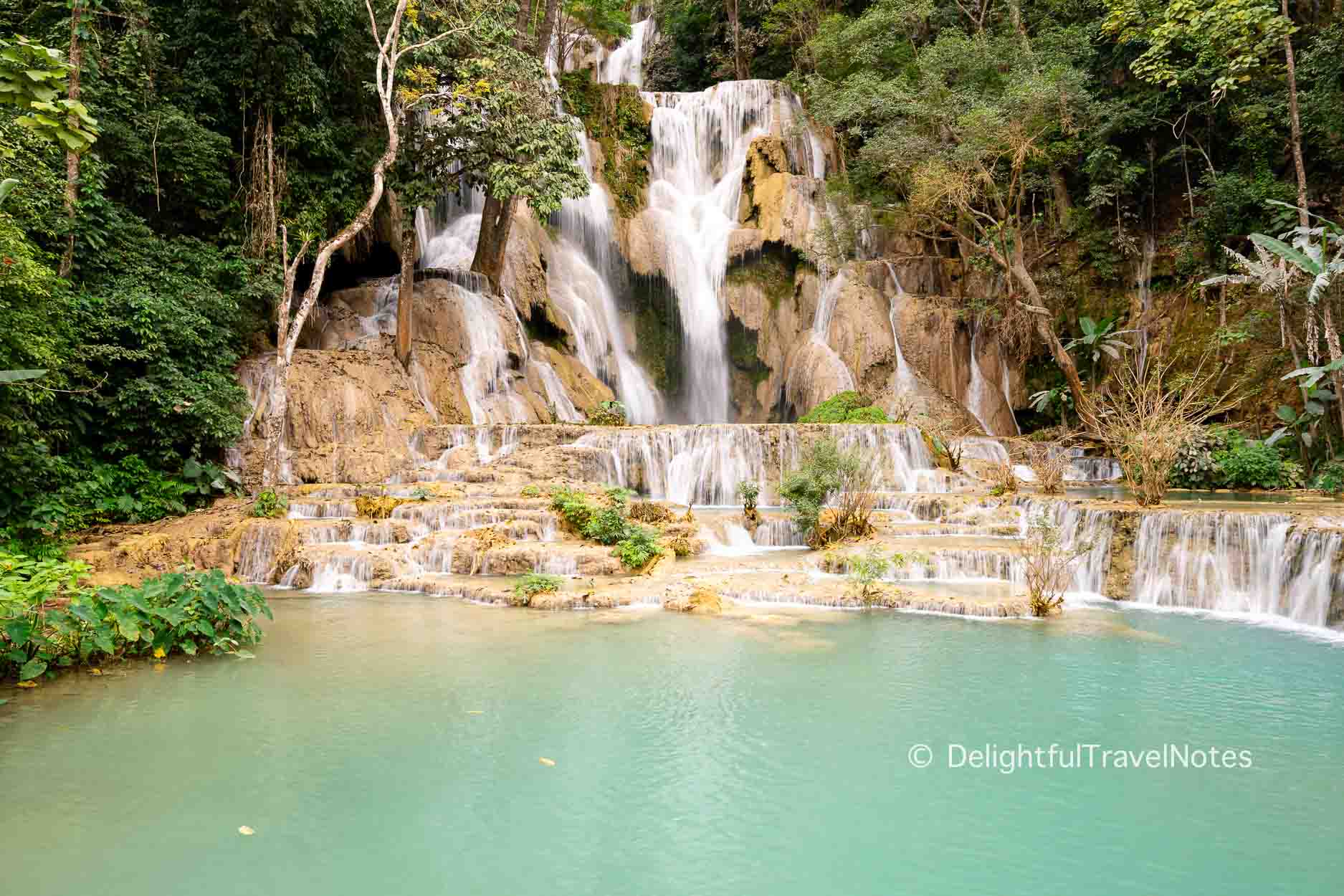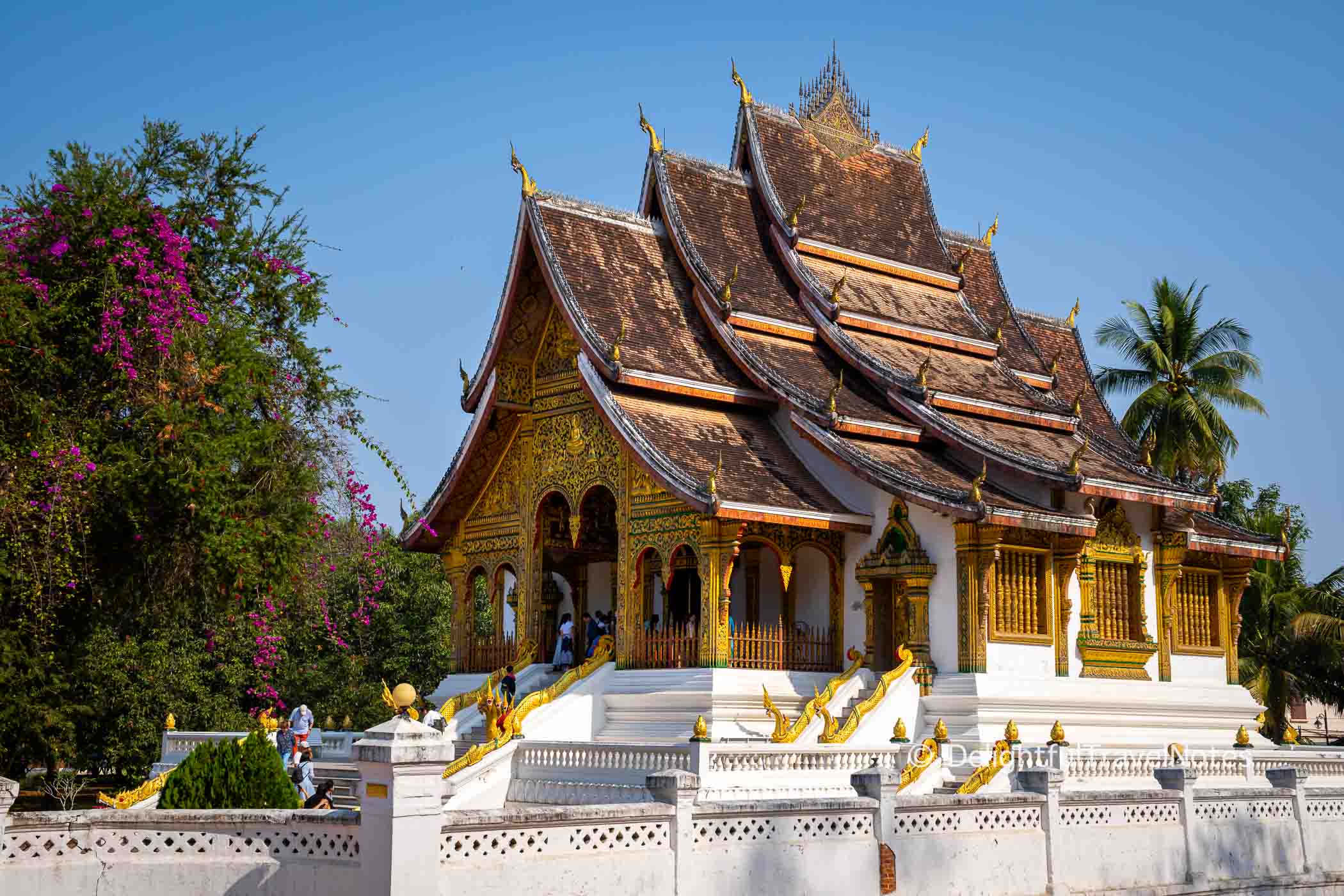Is Luang Prabang Still Worth Visiting & What to Expect
Luang Prabang, a UNESCO World Heritage site since 1995, is a picturesque town located in northern Laos at the confluence of the Mekong and Nam Khan rivers. The town is famous for its cultural heritage and well-preserved architecture with a fusion of traditional Lao wooden houses and colonial European influences.
I once spent 2 weeks in Vientiane for a job assignment over 10 years ago and had a lot of fond memories. It gave me a taste of Lao cuisine and I got to know the shy yet kind nature of the Laotian. Ever since that trip, I have always wanted to return to Laos, especially with all the praises about Luang Prabang from the internet. Here’s our opinion after our 4-day visit in February this year.

Our first day in Luang Prabang kinda left me with some slight disappointment, but at the end of our trip, the place grew on me a little more. I find that our time in Luang Prabang became more enjoyable once I learned to adjust my expectation.
Overall, I think the town is worth a visit but with some caveats that I will go into more details below. The highlights are Kuang Si Falls, the architecture and the food while the downsides include air quality and over commercialization.
Kuang Si Falls Is A Must See
For me, Luang Prabang is worth visiting just to see Kuang Si Falls alone. After a slightly disappointing first day, our second day began with visiting Kuang Si Falls and it reignited our excitement for the trip.

If you read my tips for visiting Kuang Si Falls, you will see that I initially hesitated to visit it. It turned out to be the highlight of our trip. Seeing it in person offers much more perspective than photos can capture. We were able to appreciate the scale of the waterfall and its series of pools, as well as listen to the soothing sound of the water. The milky blue waters are mesmerizing, and there’s something incredibly relaxing about watching the flow.
It’s best if you can get to the waterfall early to avoid the crowds and fully enjoy the scenery. I particularly enjoyed the cool, morning fresh air in the forest which is a contrast to the atmosphere in Luang Prabang (we’ll get to that soon).
Prepare for Unpleasant Air
We didn’t prepare for poor air quality in Luang Prabang. The temperature was very pleasant most of the time but the air was always dusty and full of exhaust fumes. I knew the air quality wasn’t the best but didn’t expect the fumes.
It was quite uncomfortable for me to walk around town, especially along the main streets. And we even live in Saigon, which is not on the list of cities with good air quality. If you are sensitive to air pollution or have respiratory conditions, this is something to consider. We always pack some face masks just in case, and it felt better when I put on a face mask.
Our visit was in February which is in the dry season – I wonder if that contributed to the air quality issues? I don’t know if this was due to the prevalence of old vehicles and old engines or the seasonal agricultural burning?
Dilution of Local Culture

This is the main reason that leads to our initial disappointment with Luang Prabang. Good news is there are things you can do to improve the experience.
The influx of international tourists has made certain aspects of Luang Prabang become too commercialized. Most of the streets in the town center are filled with shops, restaurants, tour offices, hotels, and guesthouses catering to foreign tourists. A number of businesses are owned by foreigners. Also prepare for some improper behaviors by certain tourists.
There are not enough senses of local life and authenticity. I initially had a picture of an idyllic town rich in culture, but in reality, strolling through the town center sometimes gave us an impression of being in a themed park. No, we don’t dislike touristy or crowded places – many places are that way for a reason. It’s just when there are too many businesses geared toward foreign tourists instead of local people or domestic visitors, the place may lose its authenticity.
If you don’t like Hoi An in Vietnam, there’s a high chance you may not like Luang Prabang either. Luang Prabang is significantly less crowded and touristy than Hoi An though. You can still walk on side streets which are usually empty or hang around a bit longer to let the crowds dissipate.
In the end, we still had a good time and here are things that helped:
- Have the right expectation: as I said, once we adjusted our expectation, the place grew on us little by little. We focused on appreciating its unique architecture, historical sites, and delicious food. You can check out my restaurant recommendations here. We also took more side streets which had less traffic (they are still filled with guesthouses though).
- Take cultural activities: we took a private half-day guided tour and a 1-hour local craft workshop at Heuan Chan Heritage House. I wouldn’t say they were amazing but we enjoyed talking to a local person and having a chance to understand their life and hardships. Visiting places outside of the historic town, such as Ock Pop Tok Living Craft Centre, for a different view and vibe also helped.

Other Things to Know
There are a few more things we didn’t know about before our trip. I think you may find them interesting and helpful.
One thing we quite like is that we could distinctly feel the Buddhist atmosphere in Luang Prabang. It is reflected in the gentle nature of local people, most of whom practice Buddhism. This is different from Vietnam, where we are from. In Vietnam, we conduct some Buddhist ritual ceremonies as part of our traditional customs rather than following Buddhism as our way of life.
Laos is currently experiencing high inflation impacting the cost of living and the overall economic stability. Many businesses in Luang Prabang are more than happy to accept payments in US dollar though each place may use a different conversion rate. Thai baht is also accepted. Any change will be returned to you in Laos kip.
Compared to other parts of Laos (as well as some other places in Southeast Asia), Luang Prabang can be relatively expensive. You will notice that in the prices of accommodation and guided activities.
Most accommodation options in Luang Prabang are in Laotian-style buildings. From our experience staying at the Angsana Maison Hotel and from reading various hotel reviews (Avani Luang Prabang, 3 Nagas MGallery, for example) before our trip, these buildings don’t have good sound-proofing. I needed to put on earplugs for a better sleep.

Final Thoughts
To conclude, I just want to repeat that I still think Luang Prabang is worth visiting and it’s all about having the right expectation. Go and experience it yourself. In the end, we are glad that we finally got to see it. We think 3 days is a decent amount of time to explore this town.
There are not many direct flights to Luang Prabang. We live in Ho Chi Minh City so we had to transit through Hanoi. Here’s our guide for transit at Noi Bai International Airport in Hanoi.
If you found this article helpful, please consider sharing it on Pinterest! Thank you so much!


